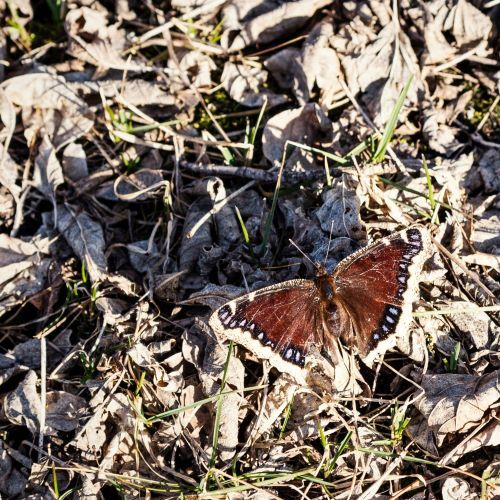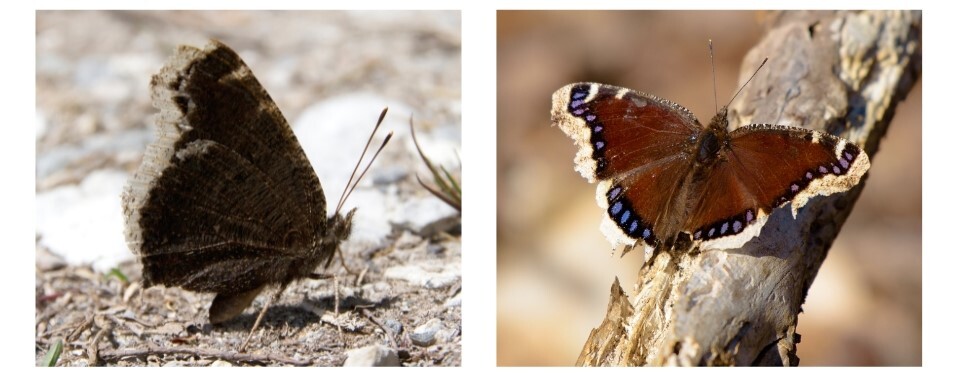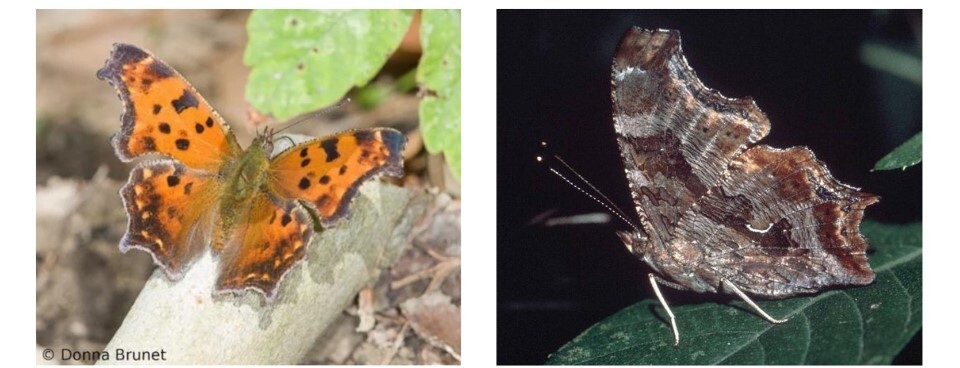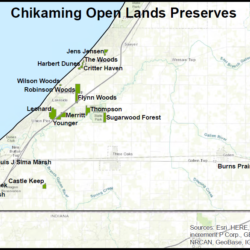
Early Butterfly Gets the Sap!
Posted on March 15, 2024
Most often associated with lush springtime or sunny summer, it can be jarring to see a butterfly in March…but it’s not unusual, depending on the species. While it’s customary to think about butterflies spending winter in a cozy chrysalis or migrating down to Mexico, did you know that some butterflies overwinter as adults right here in chilly ol’ Michigan, wings and all? Certain species emerge on warm winter or early spring days and can return to a safe spot if it gets too cold again.
Meet Some of the Year-Round Residents
The Mourning Cloak (Nymphalis antiopa) is the butterfly you’re most likely to see on a warm winter day in Michigan. These butterflies overwinter in loose bark and tree cavities and can emerge temporarily on sunny winter days. To fly, they need a body temperature of about 65°F, which they can achieve by basking in the sun. Surprisingly, they’re also able to raise their body temperature in a more unique way: through shivering. Mourning Cloaks can raise their body temperature by up to 15-20 degrees within a few minutes just by shivering!

Left image: Ventral, or underside, view of Mourning Cloak. Right image: Dorsal, or top side, view of Mourning Cloak.
The Eastern Comma (Polygonia comma) also overwinters as an adult and is one of the first butterflies to emerge in spring. While you’re more likely to see a Mourning Cloak on a sunny winter day, Eastern Commas are also occasionally seen flying around on late winter/early spring days. These butterflies hibernate in log piles, tree hollows, and even in man-made structures. There are two generations of Eastern Commas each year, one in the summer and one in the fall. Only butterflies from the fall brood hibernate through the winter. Eastern Commas are named for the whiteish-silver comma (or C) shaped marking on their hindwing, visible on the underside of their wings (see right image below).

Left image: Dorsal, or top side, view of Eastern Comma. Right image: Ventral, or underside, view of Eastern Comma.
What Do They Eat?
But, don’t butterflies need plants to survive? Not necessarily! Mourning Cloaks can be seen perched upside down on trees sipping sap or dining on rotten fruit. Eastern Commas also feed on sap and rotten fruit, but they also visit mud puddles, carrion, and animal droppings for sustenance. Not the most beautiful mental image, but hey—that’s nature for you!
While there are additional butterfly species that overwinter as adults, the two described above have been spotted in Southwest Michigan this March and reported on iNaturalist. So, if you see them at a preserve near you in the coming days, now you know!




















